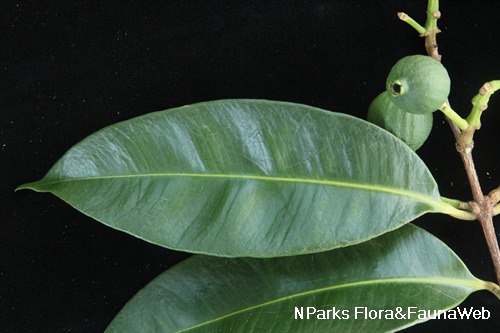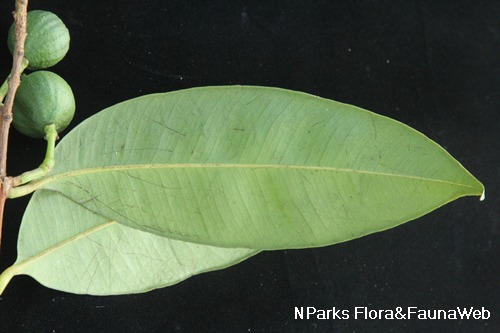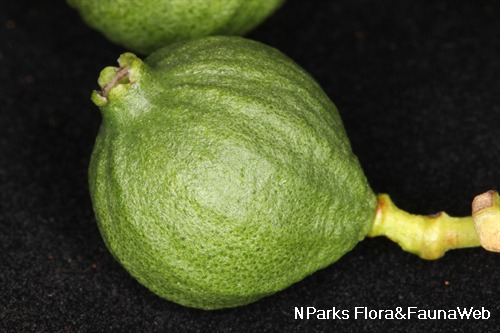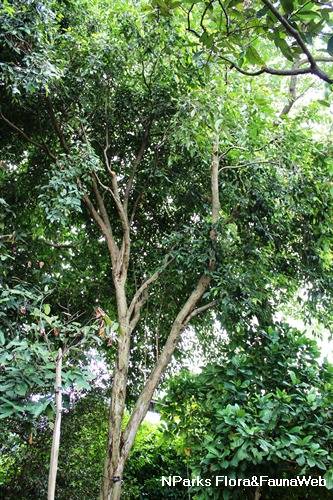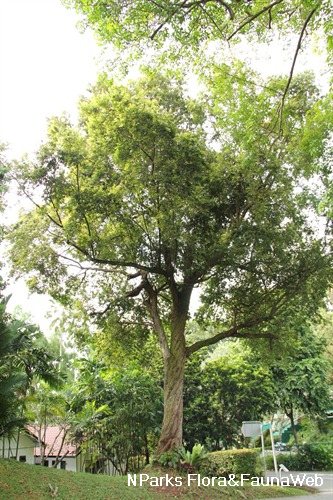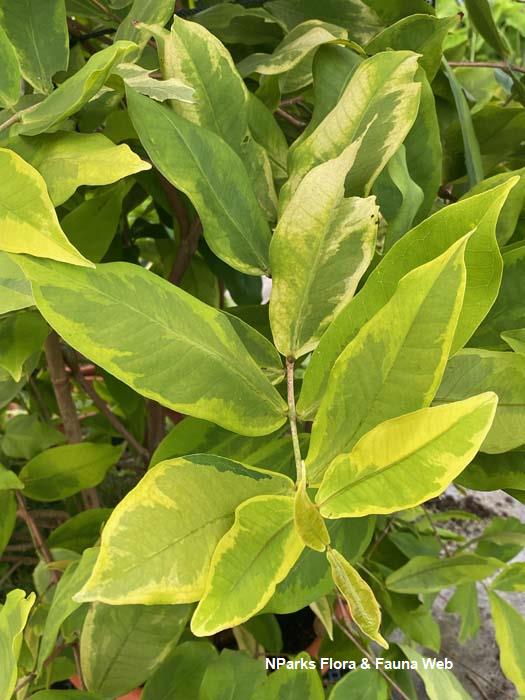
Back
Syzygium oblatum (Roxb.) Wall. ex A.M.Cowan & Cowan
| Family Name: | Myrtaceae |
| Common Name: | Bunga Dakwat, Jambu Hutan, Kelat Beti, Kelat Lapis, 高檐蒲桃 |
Name
Classifications and Characteristics
| Plant Division | Angiosperms (Flowering Seed Plants) |
|---|---|
| Plant Growth Form | Tree (Medium (16m-30m)) |
| Lifespan (in Singapore) | Perennial |
| Mode of Nutrition | Autotrophic |
| Plant Shape | Irregular |
| Maximum Height | 24 m |
Biogeography
| Native Distribution | From Northeast India and South China, through Peninsular Malaysia, Singapore to Borneo |
|---|---|
| Native Habitat | Terrestrial (Primary Rainforest, Mountain, Coastal Forest, Freshwater Swamp Forest) |
| Preferred Climate Zone | Tropical |
| Local Conservation Status | Native to Singapore (Critically Endangered (CR)) |
Description and Ethnobotany
| Growth Form | It is a tree that can grow up to 24 m tall and attain 90 cm in girth size. |
|---|---|
| Foliage | Its opposite, stalked leaves have leathery leaf blades that are lance-shaped to oblong-oval, 7.5–17 cm by 2.4–6.8 cm. Each leaf has a pointed leaf tip, 1–2 veins running parallel to the leaf margin, and up to 25 pairs of side veins. |
| Flowers | Its bisexual flowers are white or yellowish white and found in up to 10 cm long flower clusters located at the ends of its branches, or axils of its leaves. |
| Fruit | Its fleshy fruits are flattened-round, about 1.8 cm by 2 cm, and contain a single seed. |
| Habitat | It grows in lowland to montane forests up to 1200 m, peat swamp forests, and coastal areas. |
| Associated Fauna | Its flowers are probably insect-pollinated and its fruits are likely to be eaten by birds and small mammals. |
| Cultivation | It can be propagated by seed. |
| Etymology | Greek syzygos, joined, referring to the paired leaves of this species; Latin oblatum, flattened-round, referring to its fruits |
Landscaping Features
| Landscaping | It is suitable to be planted along roads and coastal areas, as it can tolerate hot, sunny, high winds and frequent salt spray conditions. |
|---|---|
| Desirable Plant Features | Ornamental Flowers |
| Landscape Uses | General, Suitable for Roadsides, Parks & Gardens, Small Gardens, Coastal |
Fauna, Pollination and Dispersal
| Fauna Pollination Dispersal Associated Fauna | Bird-Attracting |
|---|---|
| Pollination Method(s) | Biotic (Fauna) |
| Seed or Spore Dispersal | Biotic (Fauna) |
Plant Care and Propagation
| Light Preference | Full Sun |
|---|---|
| Water Preference | Moderate Water |
| Plant Growth Rate | Moderate |
| Rootzone Tolerance | Moist Soils, Well-Drained Soils, Saline Soils / Salt Spray |
| Maintenance Requirements | Moderate |
| Propagation Method | Seed |
Foliar
| Foliage Retention | Evergreen |
|---|---|
| Mature Foliage Colour(s) | Green |
| Mature Foliage Texture(s) | Leathery |
| Foliar Type | Simple / Unifoliate |
| Foliar Arrangement Along Stem | Opposite |
| Foliar Attachment to Stem | Petiolate |
| Foliar Shape(s) | Non-Palm Foliage |
| Foliar Venation | Pinnate / Net |
| Foliar Margin | Entire |
Floral (Angiosperm)
| Flower & Plant Sexuality | Bisexual Flowers |
| Flower Colour(s) | Cream / Off-White |
|---|---|
| Flower Grouping | Cluster / Inflorescence |
| Flower Location | Axillary, Terminal |
| Flower Symmetry | Radial |
Fruit, Seed and Spore
| Mature Fruit Colour(s) | Green |
|---|---|
| Fruit Classification | Simple Fruit |
| Fruit Type | Fleshy Fruit , Non-Accessory Fruit |
Image Repository
Others
| Master ID | 30821 |
|---|---|
| Species ID | 5176 |
| Flora Disclaimer | The information in this website has been compiled from reliable sources, such as reference works on medicinal plants. It is not a substitute for medical advice or treatment and NParks does not purport to provide any medical advice. Readers should always consult his/her physician before using or consuming a plant for medicinal purposes. |

